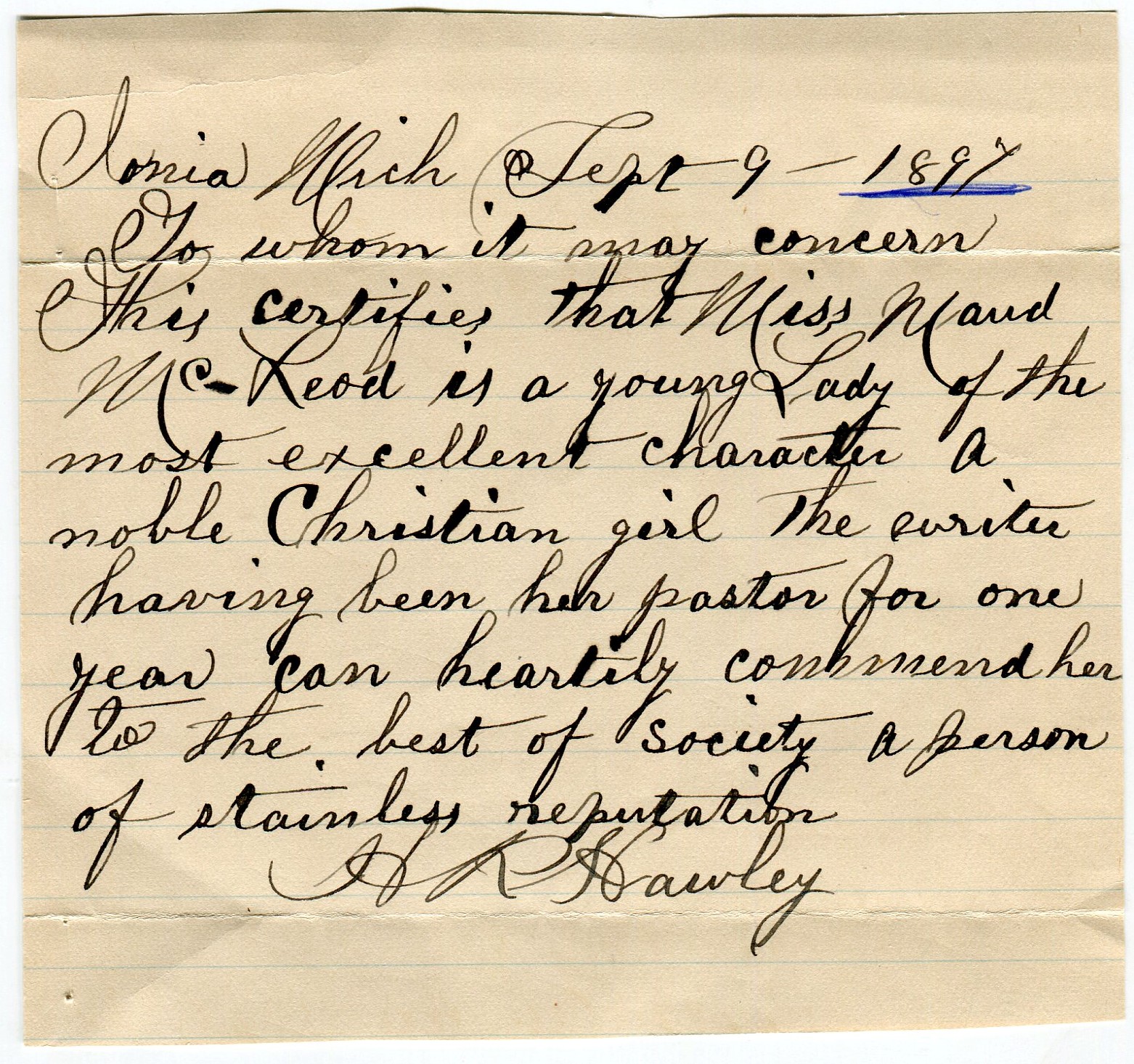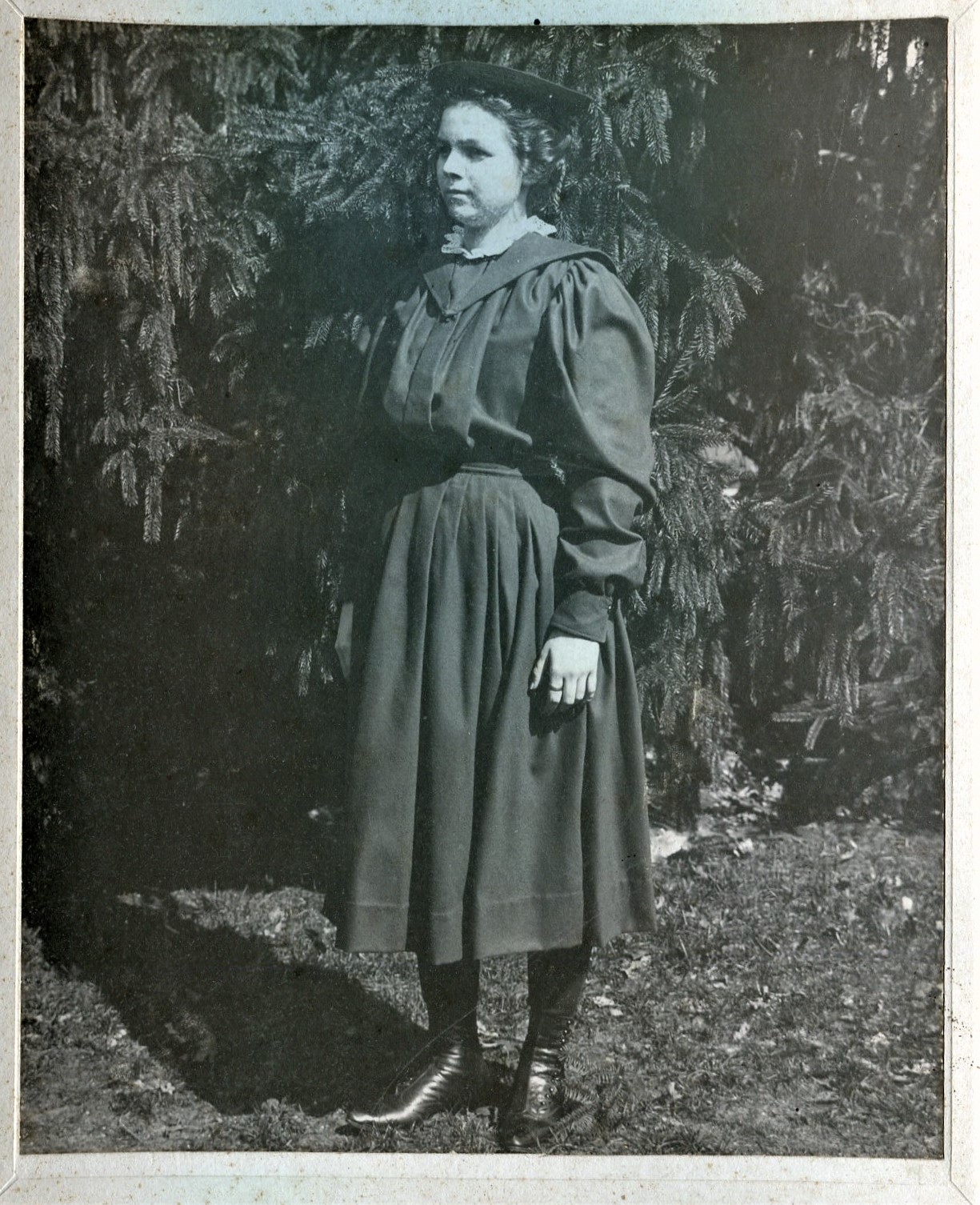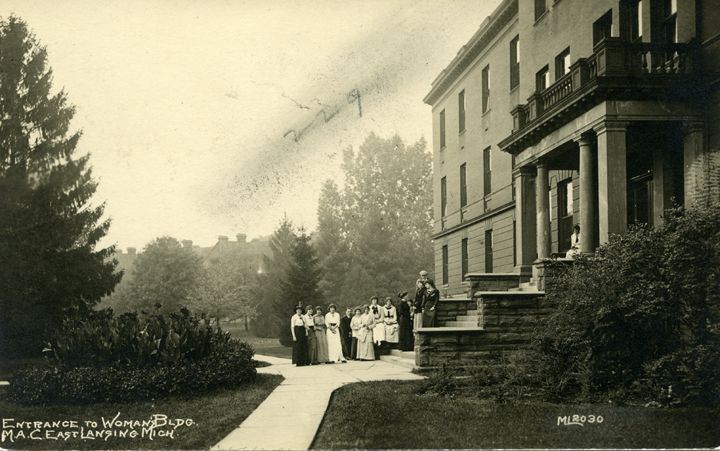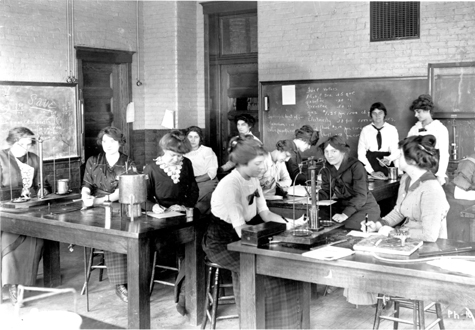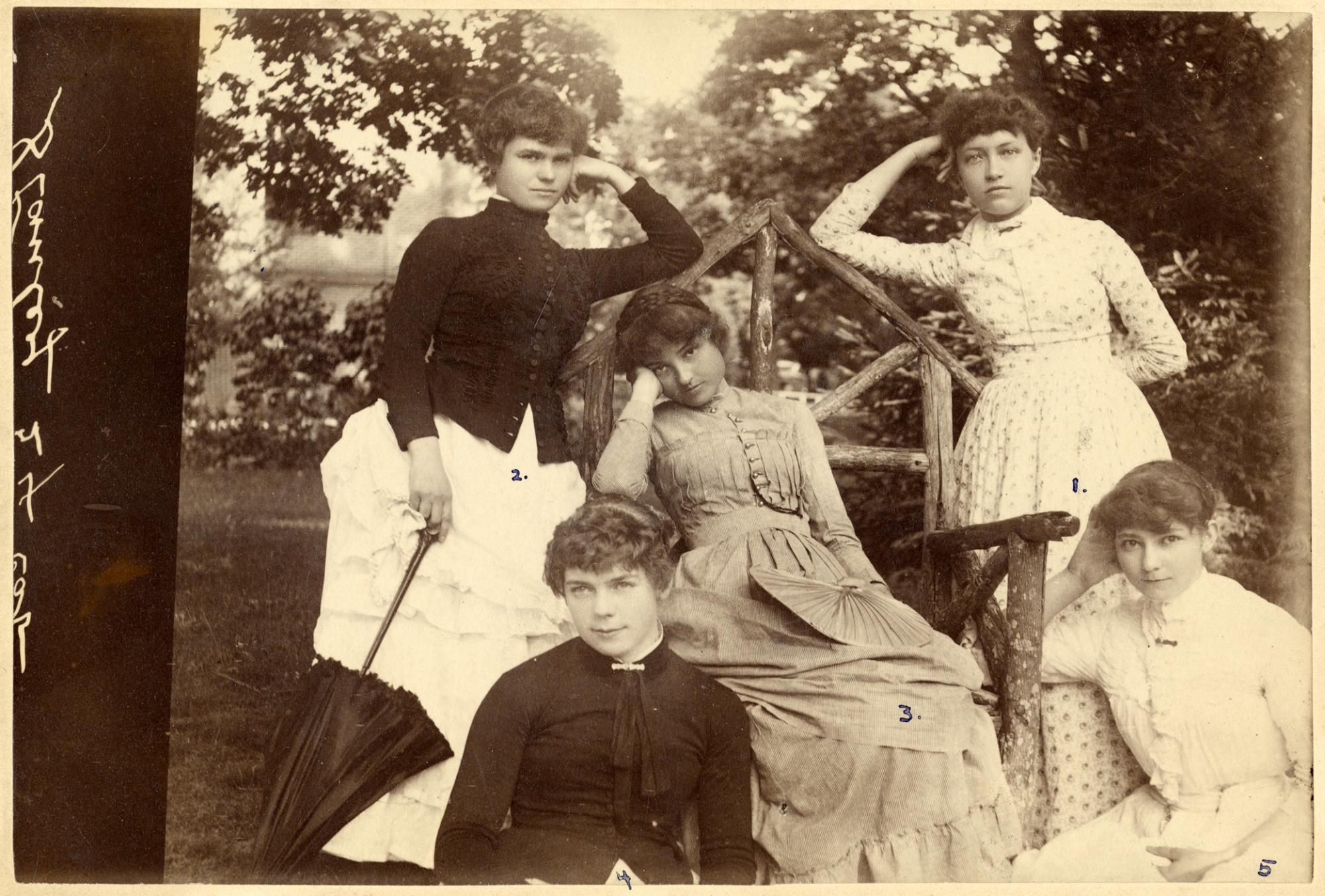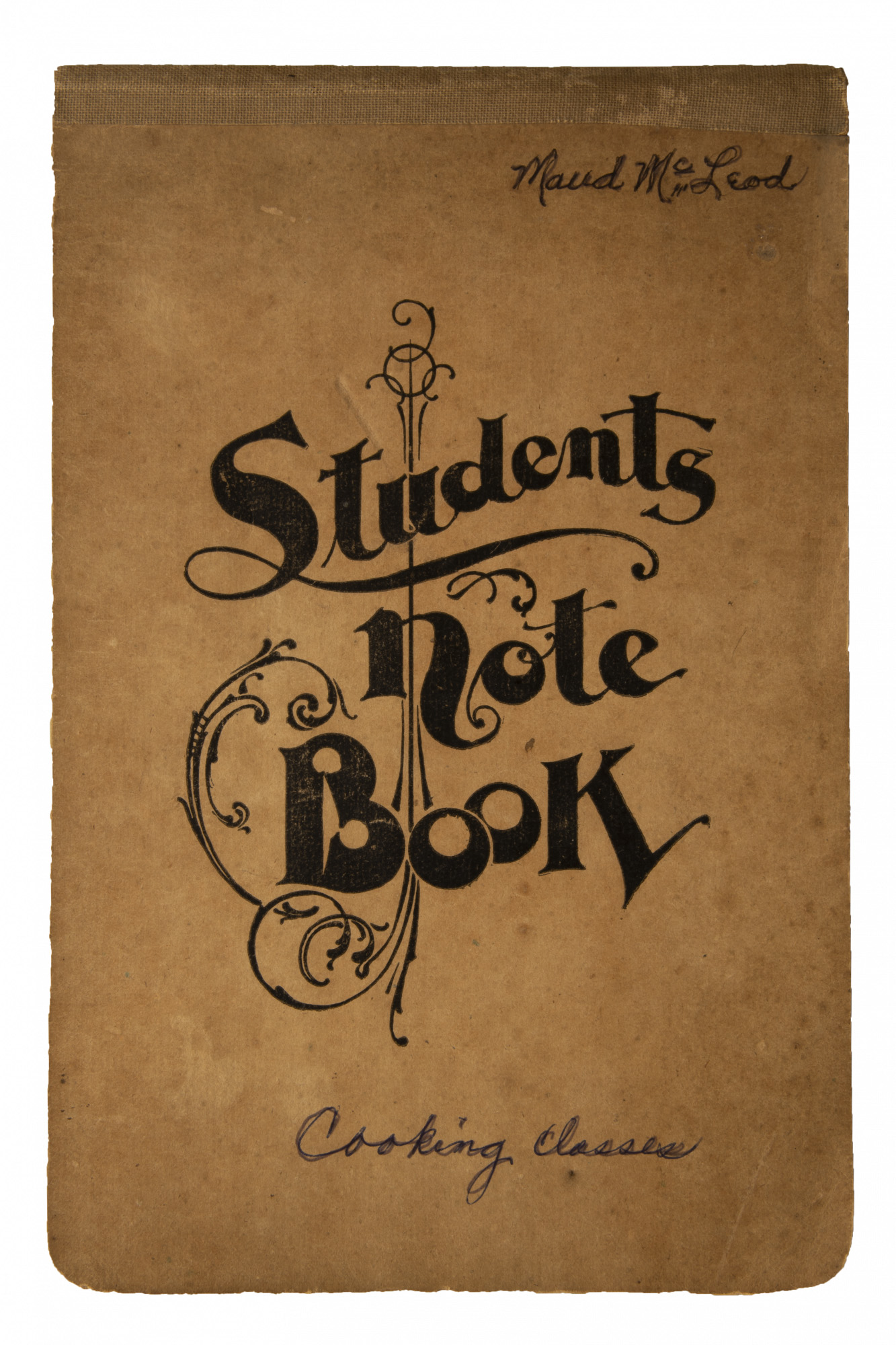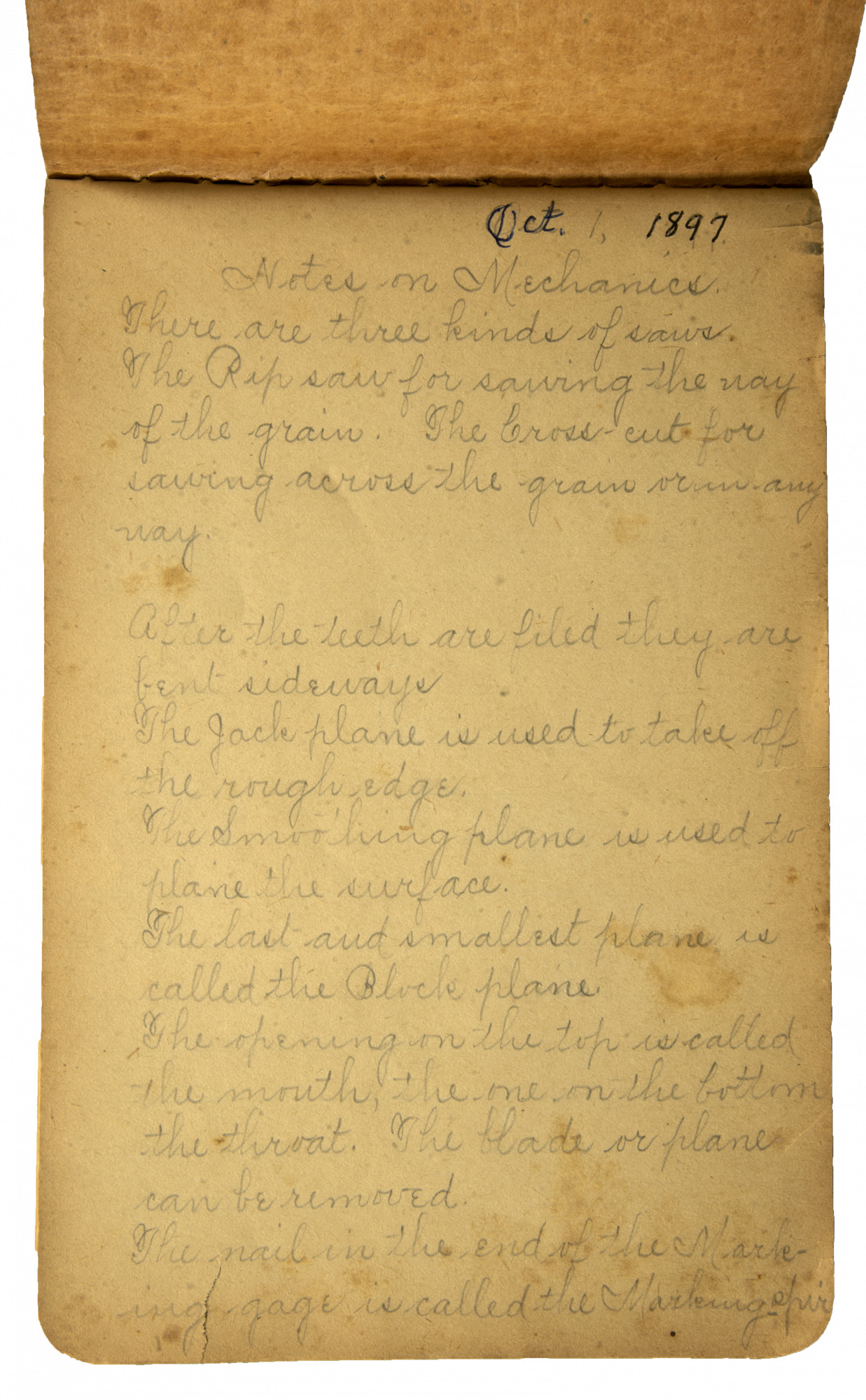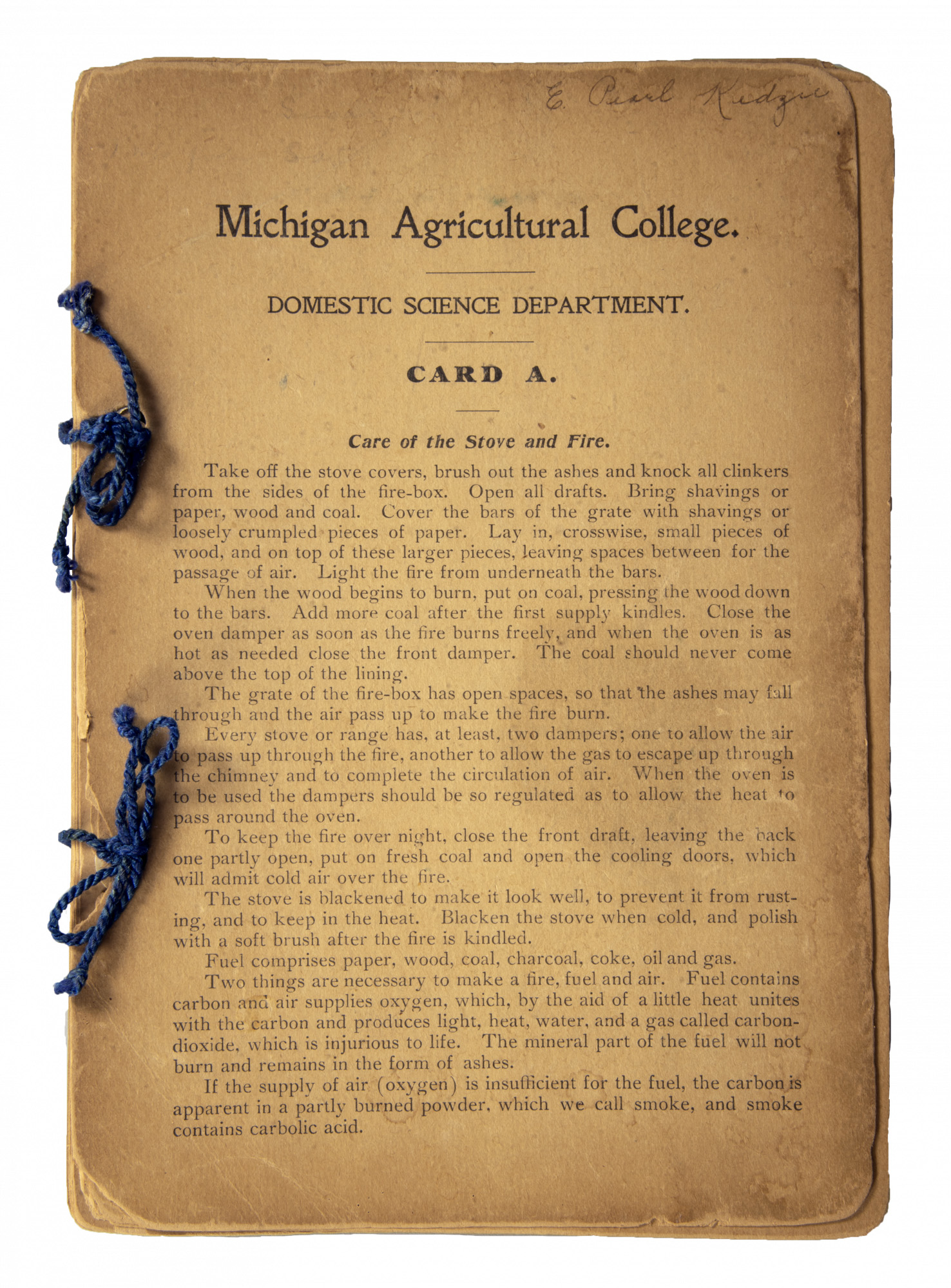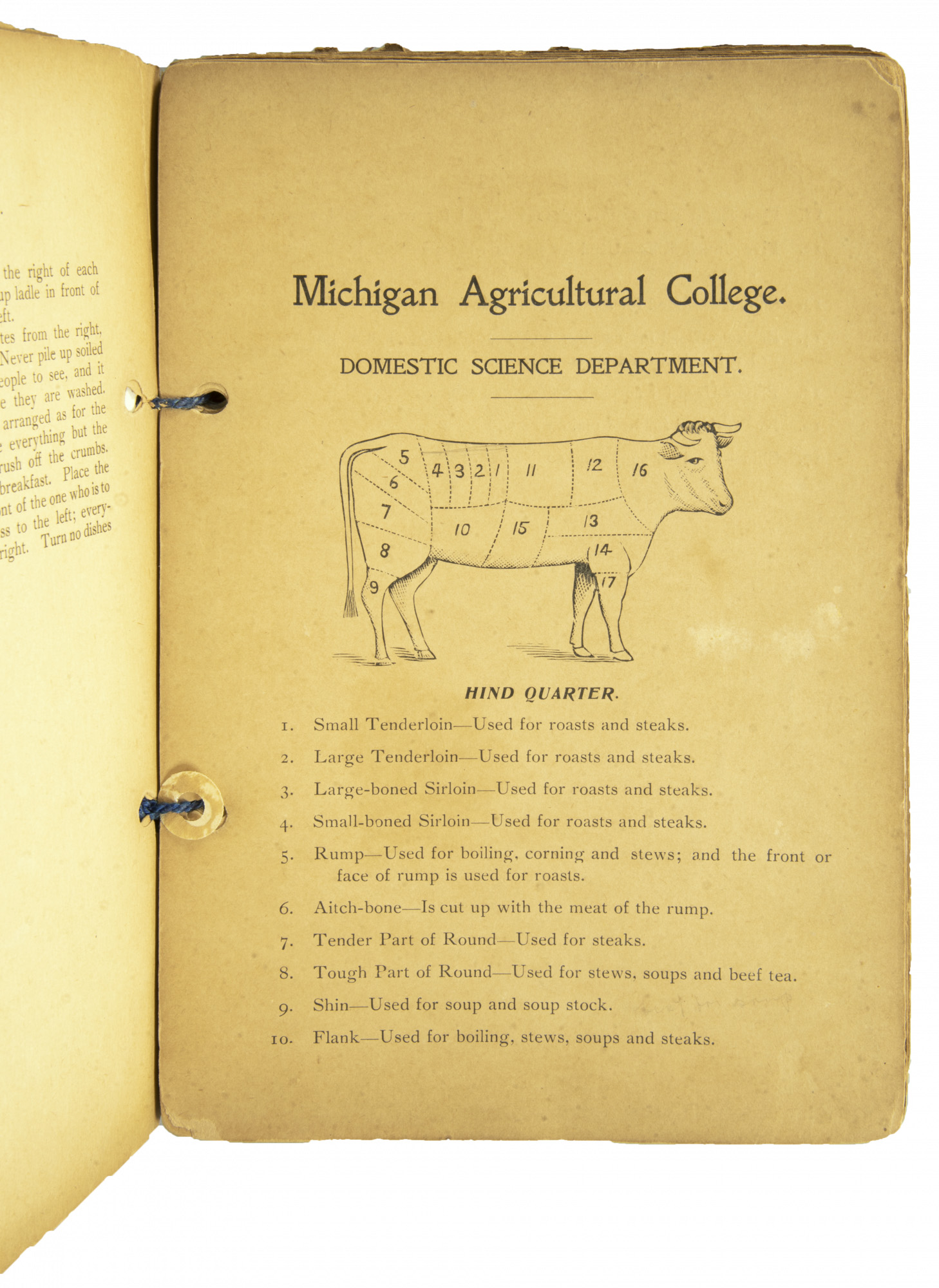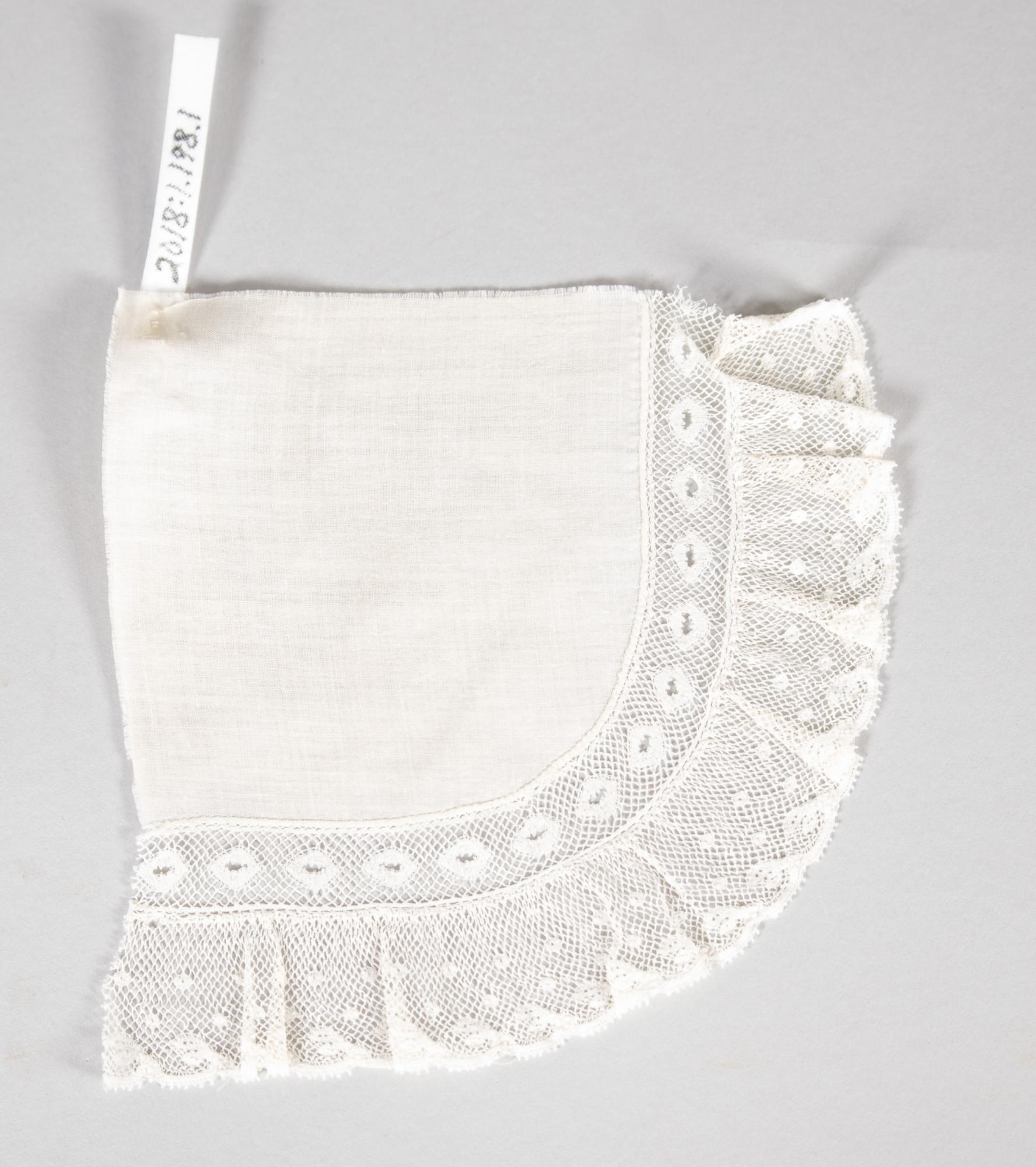Creation of the Women’s Program
Twenty-two women had graduated by 1895 from the Agriculture Course. It had become clear that there should be a dedicated educational program for the women as well as lodging on campus. In 1896 the Women’s Program was created to teach the women students domestic science and domestic art. As submitted to the annual report of the State Board of Agriculture for the year 1896-1987 "there were 39 regular and seven special students in attendance in Sept 1896.”1 The purpose for this program was to train women in a scientific way to manage their households and make it easier and less taxing.
To accommodate the women, the men’s dormitory, Abbot Hall, was renovated for 40 women and included a sewing and cooking lab. The women quickly outgrew Abbot Hall and Morrill Hall was built in 1900. Referred to as the Women’s Building, it could house 120 women and had a woodshop, music room, a gymnasium, and cooking and sewing laboratories.
Cooking was taught by Edith F. McDermott who trained the women in nutrition, how to cook with both a gas and wood stove, and the chemistry of recipes. Jennie Lind K Haner taught sewing beginning in 1987, this included the teaching of stitches, mending, and clothing making. Electives in pedagogy began in the first years of the 20th century, allowing for the training of teachers.
A degree in home economics prepared these women for a variety of careers. They could go on to be “hospital dietitians, high school teachers of home economics, flour mill chemists, tearoom managers, milliners, florists, and laboratory bacteriologists.”2
- 1Michigan State Board of Agriculture. (1898). Annual report of the secretary of the State Board of Agriculture of the State of Michigan and annual report of the Agricultural College Experiment Station. Vol. 38. Lansing: Robert Smith Print. Co., state printers and binders. p. 68
- 2Kuhn, M. (1955). Michigan State: the first hundred years, 1855-1955. [East Lansing]: Michigan State University Press. p. 228.
- Letter from Maud McLeod's minister recommending her for admission.
- Dated September 9, 1897. Signed by H.R. Hawley. The letter reads: "Ionia Mich. Sept. 9 1897 To whom it may concern This certifies that Miss Maud McLeod is a young lady of the most excellent character a noble Christian girl The writer having been her paastor for one year can heartily commend her to the best of society a person of stainles reputation HR Hawley"
- From MSU Museum (Museum Object ID 7508.11)
- A group of women in front of Morrill Hall.
- Morrill Hall was build in 1900 for the women students. It was commonly known as the Women's Building. Photo is from around 1900-1909.
- From University Archives (A001026)
- Coeds of M.A.C. 1886.
- Photo of women students taken in the summer of 1886. (Standing left to right) Mary Harrison, Jennie Towar, (Sitting left to right) Mary Carpenter, Cary French, and Mary Smith.
- From University Archives (A000425)
- Student Cooking Notebook circa 1897- 1899.
- The cover and an interior page of a cooking notebook used by Maude McLeod. The interior page is dated October 1, 1897 and describes the types of saws and their function.
- From MSU Museum (Museum Object ID 7508)
- Ella Pearl Kedzie Plant's Domestic Science Notecards, 1897-1898.
- Ella Pearl Kedzie Plant was the granddaughter of Professor Robert Kedzie. She graduated from M.A.C. 1898. These are her notecards that were used as a textbook in her Domestic Science classes.
- From MSU Museum (Object ID 2018:59.1)
- Domestic Art Sample.
- Handmade by a student in the Michigan Agricultural College Domestic Arts course, 1897-1908.
- From MSU Museum (Museum Object ID 2018:1.1 98.1)


